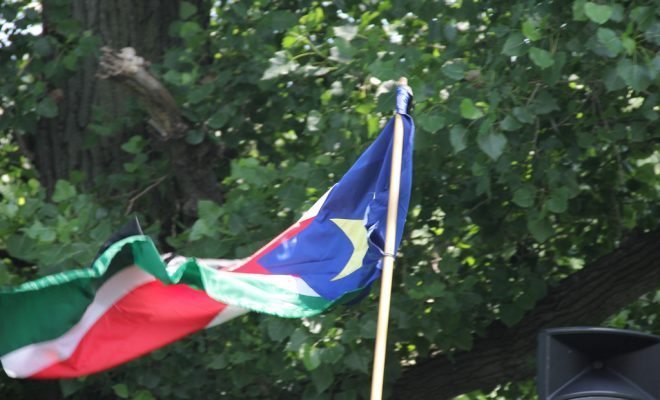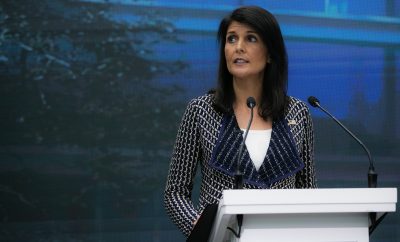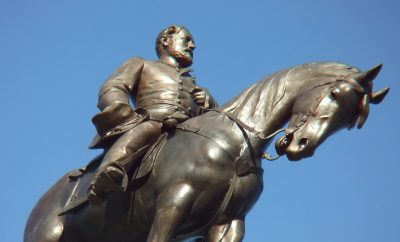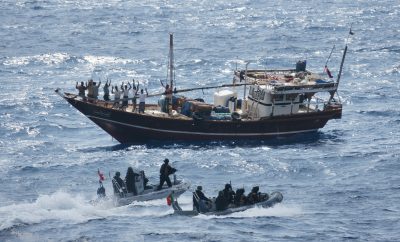 Image courtesy of [Daniel X. O'Neil via Flickr]
Image courtesy of [Daniel X. O'Neil via Flickr]
World
South Sudan’s Continuing Pattern of Reneged Peace Deals
In January 2011, South Sudan became the newest member of the international community following an overwhelming referendum in favor of secession from Sudan. Despite initial turbulence with its northern neighbor, by the middle of 2013 South Sudan looked ready to transform its wealth of natural resources into prosperity and stability. Then in December 2013, Vice President Riek Machar was forced to flee the capital of Juba following an alleged coup against President Salva Kiir. The violence has since spilled out across the country, killing an estimated 50,000 and displacing nearly two million more. The violence is highlighted by civilian massacres, ethnic violence, and other atrocities, despite seven failed peace attempts. While a recent peace agreement has at least temporarily stopped the violence, many challenges remain for the country. Read on to learn about what is going on in South Sudan’s civil war and the international peace process accompanying it.
A Brief History of South Sudan (1955-2011)
The history of what is today South Sudan is a long and bloody one, going back as far back as the second half of the 20th century. In 1955, the first Sudanese civil war broke out between the predominantly Muslim-Arab north and the largely Christian-African south. After 17 years of conflict, the fighting was halted in 1972 and the South Sudan Autonomous Region (SSAR) was formed.
Peace lasted until 1983, a couple years after oil was discovered in the south. The war resumed, or depending on who you ask, the Second Sudanese Civil War began. For several years, the North began wearing away at the agreement that created the SSAR. The second conflict emerged after Sudan assumed control of oil-rich land in the South while also imposing a strict version of sharia law. In 1991, in the middle of its conflict with the north, a South Sudan rebel group led by Riek Machar split from the Sudan People’s Liberation Army (SPLA). Other groups split from the SPLA, often along ethnic lines, but Machar’s was the most prominent. In total, the second civil war killed nearly two million and displaced another four million between 1983 and 2005.
The conflict was negotiated to a settlement in 2005 by the Intergovernmental Authority on Development (IGAD), a regional group. The settlement included provisions for a referendum on South Sudanese independence to be held in 2011.
The Referendum (January 2011)
In January 2011, the people of the South Sudan Autonomous Region, including refugees and ex-patriots in other countries, voted with 99 percent in favor of secession from the Republic of Sudan. A government was formed with Salva Kiir appointed as the president (representing the majority Dinka population) and Riek Machar as vice president (representing the Nuer population). Resource revenue–largely from the oil reserves located predominantly in South Sudan–were to be split between the Republic of Sudan (North) and South Sudan.
In July 2011, South Sudan was recognized by the international community as an independent state. Despite tension between both countries, direct conflict never broke out. The relatively orderly division of Sudan was hailed as a breakthrough in international conflict resolution.
The Recent Conflict (December 2013-August 2015)
In December of 2013, President Salva Kiir claimed that a coup had occurred from within the royal guard orchestrated by Vice President Riek Machar. Machar, who to this day denies that any coup attempt was made, fled the capital before he could be captured, going to the Upper Nile region to be with the Nuer people. He then waged an increasingly chaotic and violent struggle against Kiir’s government.
Efforts to control the violence faced significant challenges. In January 2014, U.N. peacekeepers were directed to not engage with either side of the conflict, only to protect UNMISS compounds and NGOs. Chief of Public Affairs at the U.N.’s Department of Peacekeeping Operations Kieran Dwyer best summarized the difficulties the peacekeeping and humanitarian groups were having in South Sudan saying, “It’s 11 million people across a country the size of France. How could we promise that we could protect everyone all of the time against everybody?”
The ethnic nature of the conflict has led to civilian massacres and revenge killings, which often perpetuate each other. The fighting, when combined with the climate, has led to starvation among groups of civilians. Additionally, the loose control that both Machar and Kiir exhibited over the groups under them has led to a general lack of organization and chaos. Because Machar represents all the rebel forces for the purposes of negotiation his control has been limited–there were rebel war chiefs and combatants who only had a distant allegiance to him and may have been fighting for different reasons. As a result of the chaos, there have been numerous reports of human rights violations and potential war crimes.
The following video by The VICE Report paints a picture of rebel life near the front lines of this conflict. The video does contain images that are graphic in nature, so viewer discretion is advised.
According to Laia Balcells, a political science professor at Duke University, if two sides of a conflict are close to each other in regards to power, civilian atrocities are more likely to be committed. Additionally, her research on violence against civilians in civil wars suggests that initial instances of violence correlate strongly to future instances of civilian violence. Given the relative parity demonstrated between Machar’s forces and Kiir’s throughout the conflict, the patterns Balcells predict seem to apply. That is to say, South Sudan finds itself in a vicious cycle of violence against non-combatants.
Agreements and Breakdowns
In January 2014, the two sides agreed to a ceasefire negotiated by IGAD. The agreement was initially hailed by the international community, including praise from the UN and the United States. But the deal quickly fell apart within a day of coming into effect as rebels accused the government of continuing the violence. Six additional ceasefires had come into effect only to be violated within days of being signed.
Some experts see these failed cease fires as a sign that the conflict will be prolonged. For example, Barbara Walter, a political science professor at University of California San Diego, hypothesized that civil wars are more likely to re-emerge when they are ended by partition or compromise rather than with a decisive victory for one side. Additionally, shorter wars are more likely to see renewed conflict than longer wars (with longer wars being defined as longer than 4 years). However, crucial to the peace process is that rebel opportunity costs must be increased to deter reenlistment. Opportunity costs in civil wars are often defined roughly by quality of life statistics (e.g. infant mortality rate, quality of education, national/regional GDP, etc.).
In South Sudan, we see a relatively short war combined with repeated peace processes, which attempt to create a compromise between Machar and Kiir. With neither side disarmed and both sides less than happy, war could likely return after each negotiation. This problem, coupled with a population that faces lower and lower opportunity costs to join the rebellion creates a very challenging situation for South Sudan.
The Current Ceasefire (August 2015) and the International Peace Process
In August 2015, both Kiir and Machar signed a new peace deal that includes the demilitarization of major settlements, including the capital Juba. Additionally, the deal calls for Machar to be reinstated as Vice President. While Kiir and Machar seem to be doing their best to uphold the agreement, there already have been accusations of violation of the peace agreement. Even as he was signing the deal, Kiir expressed doubts over the language of the agreement and reservations, which he set aside to avoid sanctions. It should be noted that while the peace is fragile and teetering on a razor’s edge, it is holding.
As recently as September, the U.N. Security Council has attempted to coerce the two sides into upholding the peace with sanctions targeting key figures in the conflict. However, Russia and Angola have blocked these sanctions. Recent efforts include the July sanctioning of six generals, three from each side. However, human rights groups have criticized these sanctions for not effectively targeting higher ranking officials, arguing that the sanctioned individuals had very few assets outside of South Sudan that could be seized.
There are a few possible explanations for a lack of international involvement in this conflict. Stephen Gent, a professor of political science at the University of North Carolina, hypothesized that the international community often suffers from a collective action problem when it comes to intervention. When outside groups have shared beliefs about what should be done to intervene, there’s an incentive to “free ride,” and hope another country is willing to bear the cost of intervention. Gent’s models also predict a lack of international intervention in the case of humanitarian crises (e.g. South Sudan, Darfur).
Meanwhile, the IGAD has attempted to reestablish its influence in negotiating a settlement by bringing in the African Union, United Nations, European Union, and others. The thought has been to present a united international front against the conflict. However, it has failed to gain effective backing given the international community’s general disillusionment with South Sudan.
Conclusion: Is There Hope for South Sudan?
Although South Sudan has managed to initiate a peace agreement, a lot of questions remain for the country. Thre have been several recent ceasefires and all have eventually collapsed. Furthermore, Salva Kiir’s reluctance to sign the agreement is certainly not a good indicator. Given the nature of the agreement and the country’s history, violence may quickly return. If that happens, increasing numbers of individuals will likely be displaced and in danger of starvation. Without centralized command on either side, peace talks will likely continue to fail and the currently negotiated truce appears unlikely to hold without significant intervention from the international community. Barring direct international, military intervention the relative parity between the rebel and government forces could lead to continued civilian massacres.
Resources
BBC: South Sudan Backs Independence – Results
Inter Press Service: U.N. Peacekeepers Overwhelmed in South Sudan
Al Jazeera: South Sudan: Birth of a new Country
CNN: South Sudan, Rebels Reach Cease-Fire after Weeks of Fighting
New York Times: South Sudanese Rebels Accuse Government of Ignoring Day-Old Cease-Fire
Relief Web: 50,000 and not Counting: South Sudan’s War Dead
Voice of America: Russia, Angola Delay UN South Sudan Sanctions
Foreign Policy: South Sudan’s Peace Deal Never Stood a Chance
Sudan Tribune: UNMISS Condemns Violation of South Sudan Peace Agreement
Defense News: US Warns South Sudan Warring Parties on Ceasefire
Enough Project: Sudan: Independence through Civil Wars, 1956-2005
United Nations Security Council: Resolution 2155 (2014)
International Crisis Group: South Sudan: Keeping Faith with the IGAD Peace Process
Stephen E. Gent: Strange Bedfellows: The Strategic Dynamics of Major Power Military Interventions
Laia Balcells: Rivalry and Revenge: Violence Against Civilians in Conventional Civil Wars
Barbara F. Walter: Does Conflict Beget Conflict? Explaining Recurring Civil War








Comments